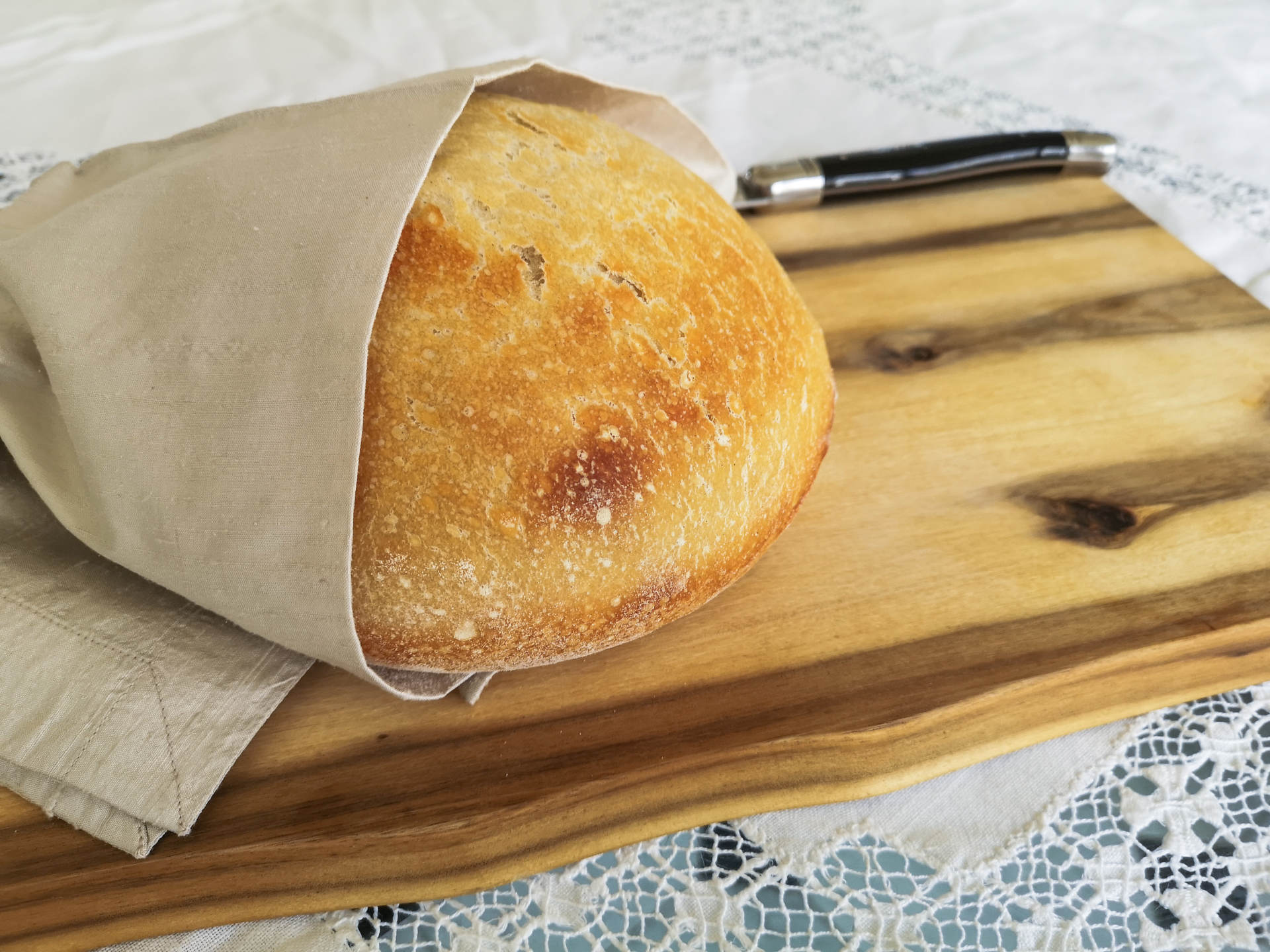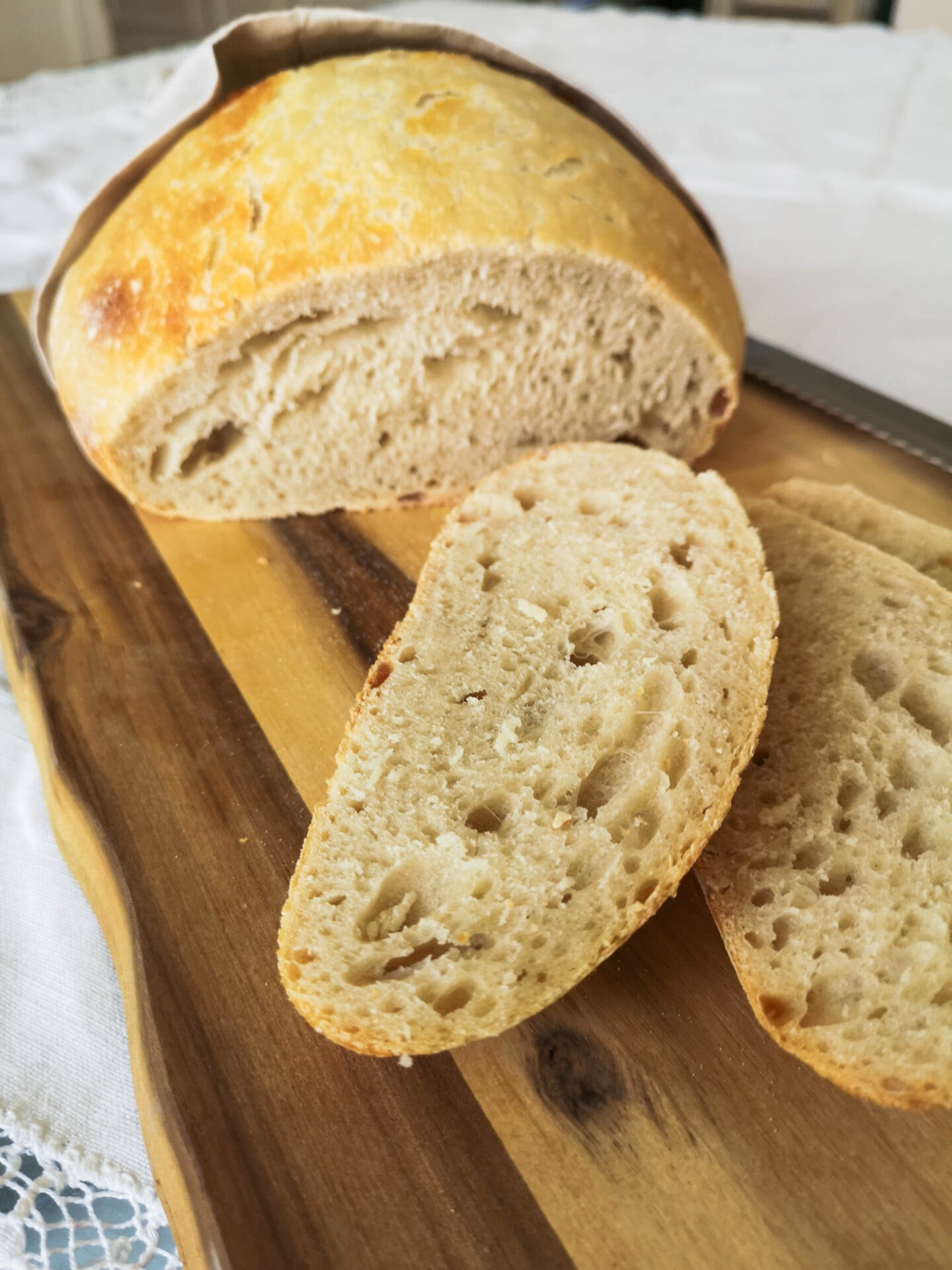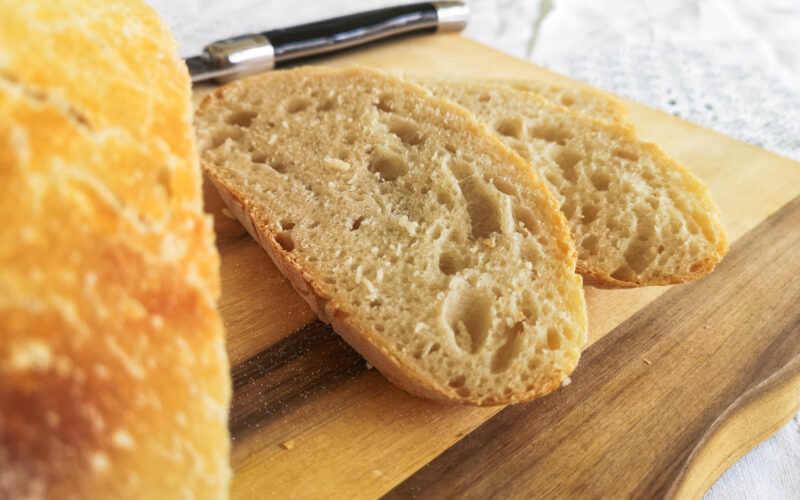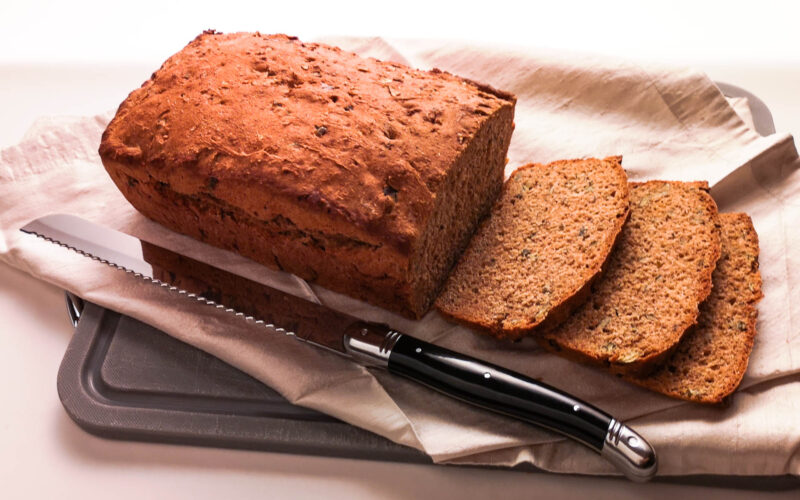Ladies and gentlemen, here comes the sourdough! After many years of absence, a jar of fresh sourdough has reappeared in my refrigerator. And now, after feeding it for three weeks, it finally had to get to work. There's no slacking off in my refrigerator.
What can I say – it did its job brilliantly and gave me some truly delicious wheat sourdough bread that I could just dig into!

Sourdough? That sounds complicated.
In short: no. Well, maybe. Some recipes are really precise, down to the gram and the degree, and basically you have to take time off work or even quit your job and buy a £5,000 oven.
But there is another way. Sourdough can be really easy. It doesn't hurt to read up on it a little. Since bread baking is all the rage anyway, you can find plenty of information online to help you become a total pro.
The really cool thing about sourdough: there are ancient sourdoughs. Did you know that? Centuries old! This small sourdough starter is simply fermented again and again with flour and water, you take what you need and continue to cultivate it. So, in theory, it lives forever. The older it is, the stronger it becomes.
The only tedious thing about sourdough bread is that it takes time. There are some really simple recipes, but they all require a considerable amount of preparation time. There's no way around it. So you need to plan ahead if you want to have fresh bread on the table at the right time.

How do I obtain a sourdough starter?
You have three possibilities:
Option 1: Cultivate your own sourdough starter. This is not difficult, but it takes five days. You will then have a freshly made sourdough starter, but it will still be quite weak. This means that you will need to add a little yeast to your first loaves. You can find good instructions for this here.
Option 2: You buy sourdough. The best place to do this is your local artisan bakery. I simply ordered it the day before from one of the great bakers here in Wels and only paid for the jar (€0.50). And this is probably what every baker who still bakes himself will do.
The advantage: you get a highly active and vigorous sourdough.
Option 3: You can buy ready-made sourdough at a health food shop or organic supermarket. Here, you use the entire packet and cannot continue to maintain a sourdough starter afterwards. The advantage is that you do not have anything in the refrigerator that needs to be looked after.
By the way, you will mainly get rye sourdough. But that doesn't really matter. I admit that I use whatever sourdough I have on hand for every loaf of bread. And I feed the sourdough with any type of flour. My current sourdough is a wheat-rye hybrid. It doesn't really matter to it, it just wants something to eat! 😊

About my wheat sourdough bread
SO GOOD! I'm so excited! Funnily enough, just a few weeks ago I remembered the delicious bread we used to get in restaurants during family holidays in the Algarve. A large-pored, airy white bread with a sour taste. And I accepted with regret that you simply can't get this bread where we live.
... until I tasted my wheat sourdough bread today! It could be a tad more sour, but it's getting there! And it's just sooooo delicious. Honestly, I could have eaten the whole loaf! I'm already a big bread fan, but this heavenly treat will be gracing my oven from now on! 💛
While you're waiting for your sourdough to be ready, why not try my super simple and quick wholemeal bread with pumpkin seeds!
Good luck! 🙂

Wheat sourdough bread
Ingredients
Equipment
Method
- It is best to start making the bread early in the morning, then you will have a loaf ready for lunch the next day.If you want to keep some sourdough for later, make more pre-dough accordingly.
- Mix the sourdough starter, water and wheat flour in a bowl. Cover the bowl with cling film. Leave to rise at room temperature for 3 hours.If you have made more pre-ferment than required, remove the extra dough and store it for later use.
- In a mixing bowl, knead the pre-dough with the main dough ingredients until smooth (slightly sticky). Cover the bowl again with cling film. Leave to rise at room temperature for 3 hours.
- Now carefully stretch the dough a little and fold it on one side. Stretch it again a little and fold it again.No more kneading! Stretching serves to get air into the dough. Put the dough back in the bowl, cover well and leave to rise in the fridge for about 20 hours.
- After the long resting period, carefully stretch and fold the dough a few times. Then leave it to warm up at room temperature for an hour and a half in a floured proving basket (or a suitable bowl).
- Preheat the oven to 240°C. If available, preheat the cast iron pot in the oven. Otherwise, preheat a pizza stone or baking tray in the oven. Place an ovenproof bowl filled with water in the oven.
- Do not fold or knead the finished dough any more, but slide it very carefully into the pot or onto the baking tray. If available, put the lid on. Otherwise, cover loosely with aluminium foil.Pour a glass of water onto the hot oven floor and quickly close the oven door.
- Bake for 35 minutes. Then remove the aluminium foil, reduce the temperature to 200°C and bake for another 15 to 20 minutes.
- Leave the bread to cool completely on a wire rack.





